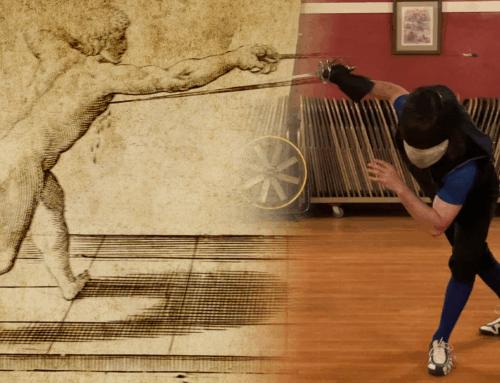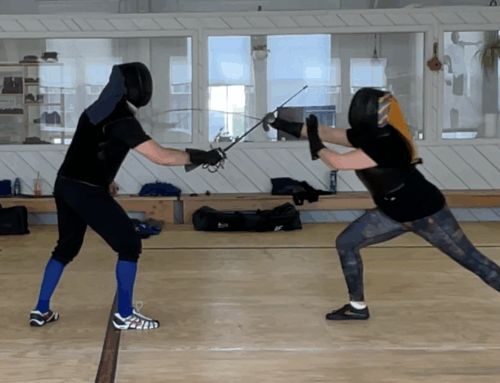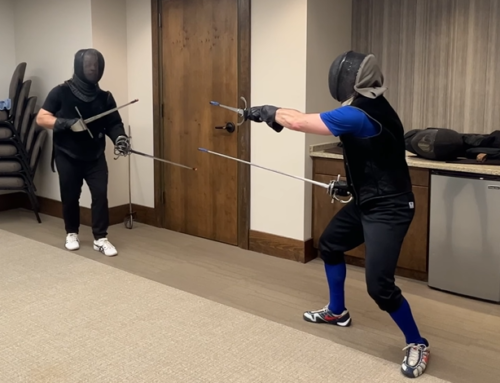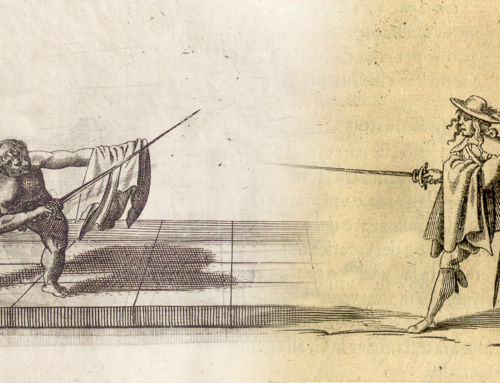Today we’ll be looking at the plays in Plate 12 of La Scherma by Francesco Ferdiando Alfieri. You can snag a copy over on Amazon if you want to follow along.
You can also find the rest of my Alfieri & other historical rapier research over in the Historical Fencing section.
In Part 1, Alfieri goes over the different types of fighters one might come across, each based off the four humors. He spent some time talking about dealing with furious opponents on a philosophical level. In this chapter he talks about some actual plays one cane employ.
Note: We don’t run into “furious” opponents often in the SCA. The closest we could compare this to is someone who fights with little regard to their own person; someone who’s willing to take the double-kill as often as allowed; a bull-charger.
The Plays
Alfieri starts off by saying fighting with furious is a super bad idea. To counter “furious” fighters, we should look to control their sword with counterguards. If we can’t gain this advantage for whatever reason, it’s important to break measure by retreating and then lunge at their head during the tempo as they step forward.
Setup. In this plate, Gentleman 22 is the furious fighter. He approaches using too many guards and overconfident. He’s relentless in his attack and rushing forward. Gentleman 23 exasperates the fury by acting fearful, specifically retreating.
Play #1. In tempo as Gentleman 22 steps forward, Gentleman 23 withdraws his front foot back so his left leg is his lead leg, and extends to thrust, striking Gentleman 22 in the face.
Alfieri doesn’t say what guard to use to strike. The image shows Gentleman 23 on the outside line but in quarta. A traditional outside guard like terza or seconda would make more sense (or be safer/stronger) to strike on the outside.
Play #2. Alternately, Gentleman 23 (as he’s retreating) can do three things:
- Feint high to the outside line along Line A and then strike in the inside line as Gentleman 22 goes to parry/riposte
- Wound on the pass or a lunge in tempo (a stop thrust)
- Feint along Line A and wound on the pass along line B while lowering the body
In this third option, it’s important to stay below and behind one’s guard to keep oneself safe. Otherwise, your opponent could also strike you in the head.
It’s my opinion that it’s better to thrust in tempo as your opponent steps forward than trying any feints. This type of fighter typically has little regard for their own person and, in the SCA, is willing to risk the double-kill.








